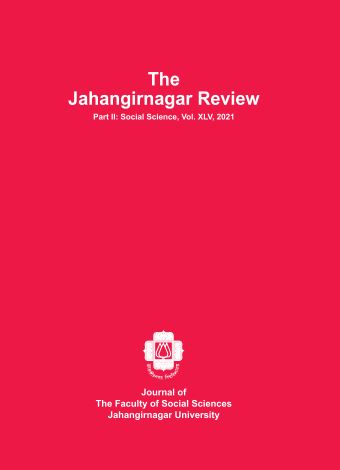Effect of Variation of Vegetation Species (Rubber and Natural Forest) on Enhanced Vegetation Index (EVI)
Main Article Content
Abstract
The Enhanced Vegetation Index (EVI) is one of the most adequate and popular indices to monitor the vegetation cover. However various types of environmental and topographical factors can produce hindrance in the EVI values. Like all other factors the species variations and characteristics have also an effect on EVI values. To find out the effect of vegetation species on EVI values the Landsat OLI image acquired from a forest dominated area with species variations from the central part of Bangladesh named Madhupur forest. To calculate the EVI values the arithmetic combination of three bands (Blue, Red and NIR) are used in QGIS environment besides for mapping purposes and for extraction of EVI values from processed raster the ArcMap 10.6 software are also used here. The output of the study indicate that high dense rubber (Ficus elastic) forest gives the highest EVI value like 0.62 and for moderate and low dense rubber forest the values are in between 0.44 to 0.54 where the high dense natural (Shorea robusta) forest gives the lowest EVI value like 0.05 and for moderate and low dense natural forest the values are in between 0.23 to 0.26. Which clearly stated that, the species characteristics and its variation has a direct impact on EVI values.

